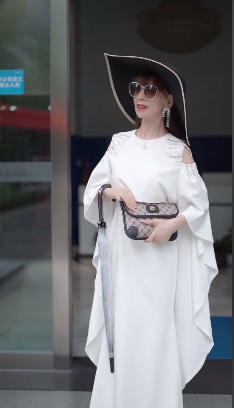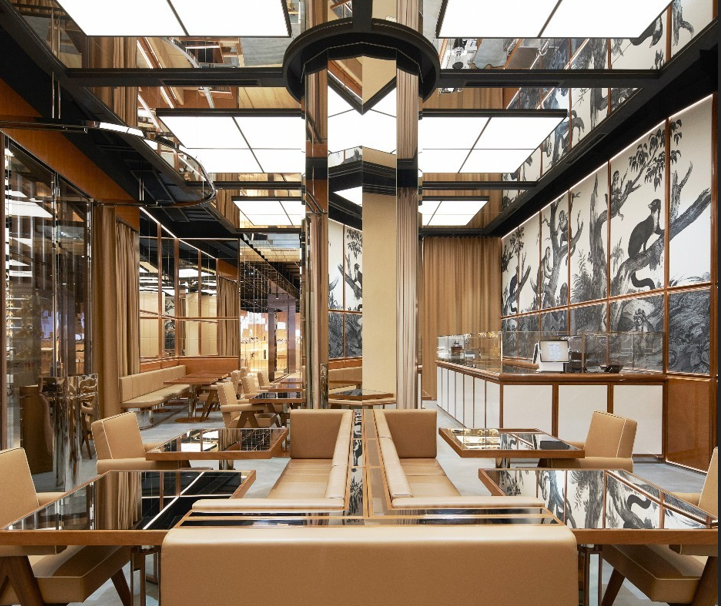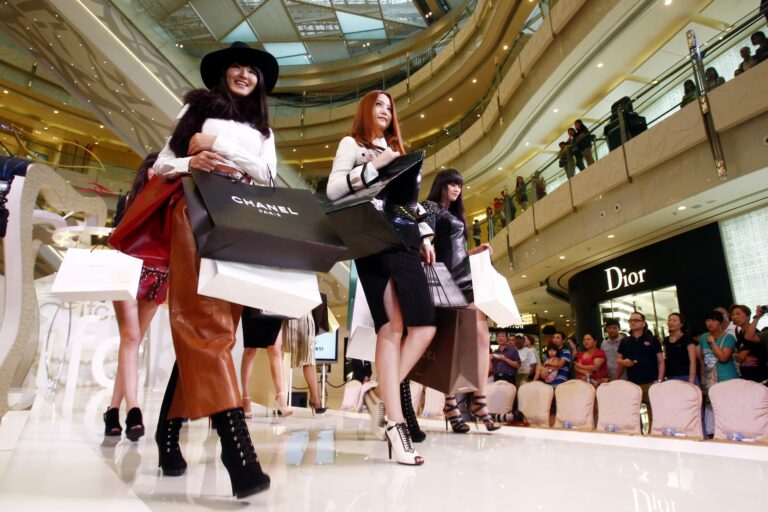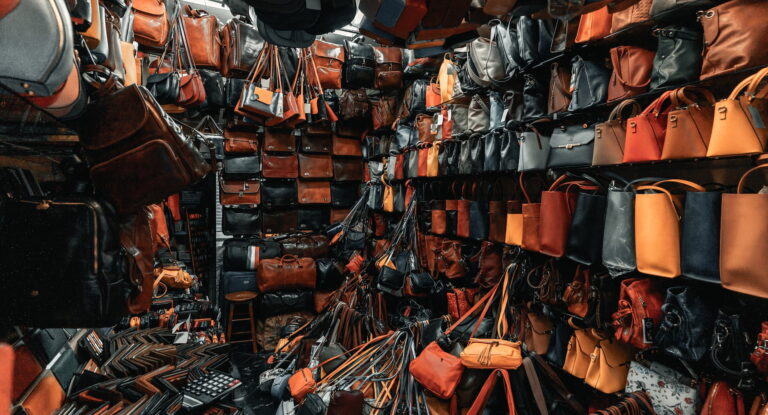China’s luxury market accounted for 20% of the global luxury market in 2020 and it is expected to become the largest luxury market by 2025, thereby surpassing the regional share of the Americas and Europe. According to the report jointly released by Ruder Finn & Consumer Search Group, consumer confidence has been restored as 41% of people surveyed in mainland China are planning on spending more money than the previous year in luxury goods, especially for cosmetics, clothing and shoes. Moreover, the COVID-19 travel restrictions still being in force induces Chinese consumers to purchase luxury items domestically. Thus, after the launching of the Hainan Free Trade Zone, Sanya ranked 5th among the cities boasting the highest luxury goods sales.
However, as domestic brands gain ground and luxury products lose their features of exclusivity, international luxury brands in China cannot be complacent; their survival will depend on their ability to adopt strategies aimed at preserving their products’ appeal to the new generation of Chinese consumers.
How brands can avoid being behind the times
By carefully observing current trends in China’s luxury industry, it is possible to infer five different approaches that could help luxury brands in China to future-proof their products, image and designs.
1. Dive deep into culture and context
Nowadays we live in a world in constant flux and this is especially true when talking about the Chinese market. Things can change very fast: new obstacles, scandals and consumer trends can arise. However, even though there is no way to predict what is going to happen, it does not mean that luxury brands in China can afford to sit back. Building up a responsive and agile framework is the most powerful tool luxury companies can have to cope with the ever-changing market they are immersed in. Hiring and collaborating with locals is an effective method to perceive changes and match Chinese consumers’ expectations.
Several brands have already started establishing ties with local independent designers and artists. That is the case of Jean Paul Gaultier, who chose Chinese puffer jacket group Bosideng for a capsule collection, and Burberry, which collaborated with four Chinese artists to create multiple installations containing the London-based brand’s Olympia bags. Other big names, such as Dior, Cartier and Louis Vuitton, instead opted for cooperating with famous museums to enhance their engagement with Chinese costumers by telling them the history of the brand. Moreover, combining Chinese cultural elements with modern designs could help companies capture Chinese Gen-Z, the biggest supporters of the Guochao tide.

2. Never underestimate the importance of market research
Due to the peculiarities of the Chinese socio-economic framework and its unique culture, conducting market research through employing sophisticated and tailor-made instruments is essential in grasping current dynamics and making predictions about future developments in each market segment. Thus, luxury brands in China cannot ignore the importance of carrying on accurate and professional market research in their attempt to prevent their products from becoming obsolete and losing ground. Beyond helping companies to promptly react to changes and speculate forthcoming trends, market research assists them in adjusting and adapting their strategy to the Chinese context.
In addition, luxury brands in China should reflect on their past mistakes to be better prepared when similar events occur again. Indeed, taking into account local culture, values and history when designing marketing messages, or hiring locals to do it, could potentially save companies from the costs implied by getting into nationalist scandals, like what happened to Dolce & Gabbana and Sony. Furthermore, as shown in recent months, overreliance on “traffic stars” and their fandom may bring about both benefits and drawbacks, hence brands are better off embracing preventive strategies aimed at curbing risks and containing potential damages coming from idol endorsements in China.
3. Pay attention to Chinese consumers’ environmental concerns
Recently China is focusing many efforts to reduce its environmental footprint. For instance, in the latter half of this year it launched the world’s largest carbon emission trading market, aimed at helping the country become a net zero emitter by 2060. Chinese consumers are developing greater awareness towards environmental issues as well: according to GfK group, about 74% of Chinese consumers admit experiencing “green guilt,” compared to 53% of Americans.
However, in order to future-proof, luxury brands should avoid hypocritical green-washing techniques and embrace, instead, a genuine sustainability strategy. iCicle, LangerChen and oqLiq are leading the way in terms of eco-friendly fashion in China and their authentic sustainable brand storytelling is capturing young consumers’ attention. For what regards big international names, this year the Italian luxury fashion maison Prada donated about 1.5 million RMB to the Red Cross Society of China for assisting flood-affected areas, winning the hearts of the Chinese audience. Nevertheless, philanthropic efforts are going to lose their strengths in the future unless fine actions accompany fine words in every aspect of the brand’s activities.

4. Expand into new markets and niches
While the market in Tier-1 and New Tier-1 cities saturates, lower tier-cities are blooming. Changing demographic trends, increasing incomes, faster urbanization, enhanced connectivity and low product-penetration rates are unveiling the great market potential of such urban centers. Meanwhile, their dwellers’ consumer habits are becoming more sophisticated, sparking a lively interest in high-end products and unique experiences. Expanding their business into lower tier-cities would grant luxury brands in China a blue ocean where they may engage with a rising consumer class boasting an increasingly higher propensity to consume.
Moreover, such a diversification strategy should involve target groups as well. As the population ages, brands cannot rely on the youngsters forever: according to the Brookings Institute, China will host the largest silver economy after the US and the elderly are emerging as major players in the national economy, motivated by an increasingly hedonistic and individualistic socio-economic structure. In addition, internet penetration is growing among those aged 60 and above in China, fostering their online spending and leading to the emergence of the first silver-haired KOLs.
Putting eggs in more baskets will also imply moving into other segments, such as 5-star recreation, high-end pet accessories and luxury sportswear, as well as targeting virgin niches. For instance, the Italian jewelry house Bulgari is now running a hotel chain, while Ralph Lauren has its own cafés in the US and France.

5. Develop and implement a digital transformation strategy
The so-called Fourth Industrial Revolution is going to deeply change the way we live, work and interact. The world of luxury will not remain untouched; thus, brands need to develop and implement a digital transformation strategy in order to avoid getting stuck behind the times. A new way of conceiving retail is emerging: establishing a bridge between the virtual and the real world. This phenomenon started in the F&B industry, with Alibaba Hema Xiansheng as one of the pioneers, but it quickly spilled over into the luxury goods market. Earlier this year Burberry collaborated with Chinese tech giant Tencent to open its first social retail store in Shenzhen.
By using a Wechat Mini Program, Burberry’s customers are now able to interact with the store, learn the history of the items they are interested in and share their experience on Chinese social media platforms. Without a doubt, Wechat and its Mini Programs are going to play an increasingly major role in luxury brands’ strategy in China, since compared to traditional e-commerce platforms, such as T-Mall and Kaola, they allow brands to reach consumers directly and independently, granting them a full control over the entire process. Nevertheless, digital does not necessarily mean eco-friendly: a Yale-led study showed that the spike in online activity during the pandemic led to a tremendous increase in demand of electricity and water. Hence, if luxury brands overlook negative externalities coming from digital tools such as NFTs, they risk hampering their own sustainability efforts, converting them into mere green-washing operations.

Takeaways: how luxury brands can future-proof in China
- Consumer confidence has been restored in China and people are willing to increase their spending in luxury goods. However, luxury brands in China cannot afford to sit back. Instead, they need to develop future-proof strategies.
- In China’s fluid reality, hiring and collaborating with locals may help luxury brands to be more responsive and agile in perceiving and reacting to changes.
- Conducting accurate and professional market research is essential in understanding current trends and making predictions about future developments in each market segment.
- In order to meet Chinese consumers’ environmental concerns, luxury brands need to develop an authentic sustainable brand storytelling. Nevertheless, it is of major importance to adopt a coherent behavior, avoiding turning sustainability efforts into mere rhetoric.
- As their main market saturates, luxury brands in China should diversify their business by expanding into lower tier-cities, targeting new consumer groups and moving into other market segments.
- The Fourth Industrial Revolution is coming and big luxury names should not be unprepared. The integration between offline and online elements is giving birth to a brand new way of doing and conceiving retail. Meanwhile, high-end companies are attempting to enhance their control on e-commerce operations. However, luxury brands need to find a balance between digitalization and sustainability efforts.





